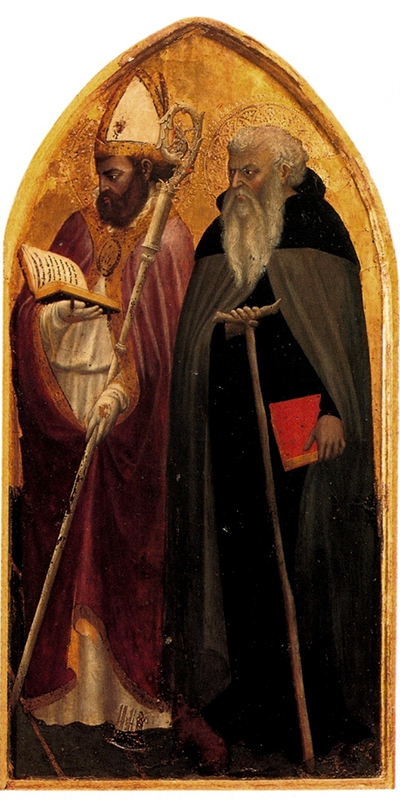Italian Renaissance painter, Masaccio, is an engulfing artist whose artwork seizes people for generations
The 15th century painter is well known for his prominent portrayal of biblical scriptures, alongside scenes from the Roman society he lived within.
The artist was commissioned in Italy to paint an altarpiece for a small church, with three panels. Each section of the painting is famously known and honored as if captivates different elements of the Roman Catholic religion.
The right panel showcases two male figures, Saint Anthony and Saint Juvenal. The significance of these Saints and the reason behind why they were depicted was based on their immense influence during the 14th century. Saint Anthony was a Christian monk and symbolizes the strength to forgo temptation. Saint Juvenal was honored the title of a Saint as he was seen as the first confessor to reveal his sins. These figures hold significant history behind their being that reveals why they were significant enough to be painted.
Masaccio had showcased these two individuals in more detail that the other two Saints on the left panel, also known as San Giovenale Triptych Left Panel. On the right panel, the viewer is able to witness the two Holy entities as they tilt their bodies towards the middle panel of the Virgin Mary.
The immense amount of detail illustrates their exact features, up raising the question of why the artist did not spend as much time on the left panel. It is unknown which one was completed first as the painting is commonly referred to all three panels together as one mural, however outputs such as time and money were perhaps the pressing matters behind the quality of the art work.
These two male figures stand next to one another as they are dressed in dark textiles. Perhaps, since the Virgin Mary is painted in such deep shades, the artist was forced to continue the theme and depict the accessorizing Saints in the same colour scheme in order to not take attention away from the centre or seem not unified.
The male figure on the right is dressed in a gloomy black cloak with grey detailing sections, an altered attire from a usually Saint or holy figure. He holds a swirling wooden cane at the base, holding a gothic feel to his presence. His face is covered by a rich grey beard that edges off into a single section. As well, his white hair gently falls back wards, as a balding spot occurs at the top.
The Saint on the right is holding a bright red book within his left arm, drawing the viewers attention in contrast to his black attire. To his left, the other Saint stands as he reads the pages of a book. He is clothed in a purple cloak that highly resembles the costume of a bishop at the time. Beneath the textile, glimpse of white fabric fill the canvas, as the viewer is able to make out the material. The perimeter of the fabric is detailed in a lush gold detail that covers the corners. The gold colour continues into the Saints hat, accentuated by a pure white colour.
The Saint on the left wears white gloves on his hands as he holds the religious stick that swirls at the top in a vine. While both individuals are symbolic Saints from the 14th century, the affluent attire of the Saint on the left compared to his colleague on the right highly differs from one another. This altered attire uprises the question of why the artist had portrayed these figures in such different textiles.
Masaccio's artwork is world renowned as his beautiful illustration of biblical figures and religious scenes through history.




